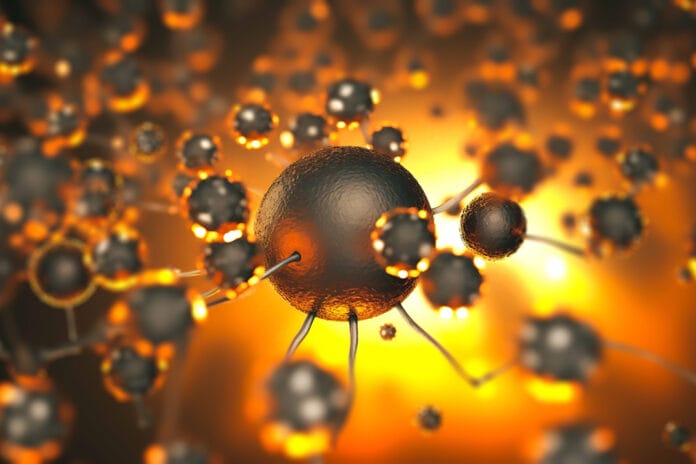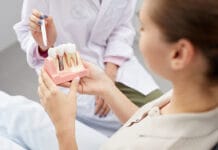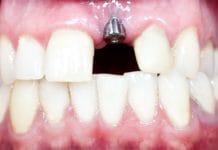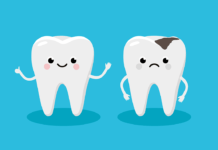Historically, one of the most challenging dental diseases to manage has been dental caries. The prevalence of untreated dental caries between 2017-2020 is estimated to be around 21.3% or one in 5 adults in the U.S. population. This does not account for the number of children that are affected by untreated dental caries.1
The reason is often lack of access to care or lack of financial means to access care. This conundrum has sparked sealant and fluoride programs in schools meant to provide some level of care to children. These minimally invasive treatments reduce caries rates significantly in children. However, what about adults who are suffering from untreated dental caries, which can lead to missed time from work, lost wages, and a lower quality of life?1
In this article, I would like to propose a possible cost-effective solution to the high rate of untreated dental caries in adults and children. The therapeutic agent I’m referring to is nano silver fluoride, not to be confused with silver diamine fluoride.2
Nano Silver Fluoride Mechanism of Action
Nano silver fluoride is comprised of silver nanoparticles, chitosan, and fluoride that arrests and prevents carious lesions. It should be noted that chitosan is derived from the outer skeleton of shellfish. Therefore, nano silver fluoride should be used with caution in patients with a shellfish allergy. Some studies have indicated patients with shellfish allergies are not affected by chitosan. However, there are other options for these patients, and risk versus benefits should be evaluated when deciding if nano silver fluoride is the best option for patients with a shellfish allergy.3
The mechanism of action of nano silver fluoride in preventing and arresting carious lesions is attributed to the combination of its ingredients. These components have been shown to have antimicrobial properties against S. mutans and Lactobacillus. The small size and spherical shape of the nanoparticles enhance their antimicrobial effects by increasing their contact with bacteria. Fluoride in nano silver fluoride has the same mechanism of action in preventing caries, as in most fluoride-containing products, by promoting remineralization of teeth and inhibiting bacterial activity in biofilm. Silver nanoparticles have the potential to combat remaining bacteria within carious lesions and at the edges of dental restorations.4
Efficacy of Nano Silver Fluoride
Multiple clinical trials have been completed to determine the safety and efficacy of nano silver fluoride.4-6
One clinical trial aimed to evaluate the effectiveness of nano silver fluoride applied annually to arrest caries in children. In this clinical trial, 130 decayed primary teeth were randomly divided into two groups: nano silver fluoride (experimental agent) and water (control group). The ICADS II criteria were used to determine the progression of lesions, which were evaluated seven days post-application, five months post-application, and 12 months post-application.4
The results showed 81% of teeth in the nano silver fluoride group exhibited caries arrest at seven days, 72.7% at five months, and 66.7% at 12 months. This compared to 34.7% of the teeth in the control group, which remained arrested at 12 months.4
Another clinical trial evaluated the efficacy of different concentrations of nano silver fluoride. This study also used primary teeth. A total of 68 children with 173 decayed primary molars were included in this clinical trial. They were placed in two groups, nano silver fluoride 600 (experimental group) and nano silver fluoride 400 (positive control). The application was applied only once in six months.6
The results indicated the higher concentration (600) had a higher success rate of arresting decay compared with the lower concentration (400). The teeth were re-evaluated at 30, 90, and 180 days. At the six-month follow-up, the success rate for arresting decay in the nano silver fluoride 600 group was 72.7%, while the success rate in the positive control group (nano silver fluoride 400) was 56.5%.6
The last clinical trial I want to mention aimed to compare the efficacy of self-assembling peptide, nano silver fluoride, and sodium fluoride varnish on white spot lesions in permanent teeth. Sixty-six young adults with white spot lesions on 147 teeth were randomly placed in the three groups.5
Participants were re-evaluated at one, three, six, and twelve-month intervals. The results indicated improved remineralization with both self-assembling peptide and nano silver fluoride, yet no significant improvement with sodium fluoride varnish.5
Clinical Application of Nano Silver Fluoride
Nano silver fluoride is emerging as a possible alternative to silver diamine fluoride in pediatric practices as well as a great option for minimally invasive treatment in adults. The efficacy is in line with that of silver diamine fluoride with no staining for better aesthetics.7
Nano silver fluoride is also an option to consider for mission trips in underdeveloped countries and rural areas with little access to care in the U.S. The minimally invasive treatment model is gaining popularity with the understanding that drill and fill is not always necessary to treat active decay. Minimally invasive dentistry is defined as “a systematic respect for the original tissue.”8
Drilling teeth starts a dental death spiral as every time the tooth needs further treatment, more and more original structure must be removed. Retaining as much original structure as possible is ideal to extend the life of the tooth. Other popular therapies used in the minimally invasive dentistry model include sealants, fluoride varnish, resin infiltration, and atraumatic restorative treatment.9
Conclusion
Adding nano silver fluoride to the prevention and minimally invasive armamentarium may provide an option for patients in private practice as well as in maintaining as much original tooth structure as possible, extending the life of the tooth.
However, the best implementation for nano silver fluoride would be to manage untreated caries in rural areas and underdeveloped countries, as access to care in these areas is a problem. Additionally, it is cost-effective and does not cause staining, making it a more aesthetic option.
Though further studies are warranted to determine the best protocols to implement nano silver fluoride, it is a therapeutic agent to watch and consider as a minimally invasive option.
Before you leave, check out the Today’s RDH self-study CE courses. All courses are peer-reviewed and non-sponsored to focus solely on high-quality education. Click here now.
Listen to the Today’s RDH Dental Hygiene Podcast Below:
References
- Bashir, N.Z. Update on the Prevalence of Untreated Caries in the US Adult Population, 2017-2020. Journal of the American Dental Association. 2022; 153(4): 300-308. https://doi.org/10.1016/j.adaj.2021.09.004
- Pushpalatha, C., Bharkhavy, K.V., Shakir, A., et al. The Anticariogenic Efficacy of Nano Silver Fluoride. Frontiers in Bioengineering and Biotechnology. 2022; 10: 931327. https://doi.org/10.3389/fbioe.2022.931327
- Amaral, L., Silva, D., Couto, M., et al. Safety of Chitosan Processed Wine in Shrimp Allergic Patients. Annals of Allergy, Asthma & Immunology. 2016; 116(5): 462-463. https://doi.org/10.1016/j.anai.2016.02.004
- Santos, V.E., Jr, Vasconcelos Filho, A., Targino, A.G., et al. A New “Silver-Bullet” to Treat Caries in Children – Nano Silver Fluoride: A Randomised Clinical Trial. Journal of Dentistry. 2014; 42(8): 945-951. https://doi.org/10.1016/j.jdent.2014.05.017
- Atteya, S.M., Amer, H.A., Saleh, S.M., Safwat, Y. Self-assembling Peptide and Nano-silver Fluoride in Remineralizing Early Enamel Carious Lesions: Randomized Controlled Clinical Trial. BMC Oral Health. 2023; 23(1): 577. https://doi.org/10.1186/s12903-023-03269-4
- Arnaud, M., Junior, P.C., Lima, M.G., et al. Nano-silver Fluoride at Higher Concentration for Caries Arrest in Primary Molars: A Randomized Controlled Trial. International Journal of Clinical Pediatric Dentistry. 2021; 14(2): 207-211. https://doi.org/10.5005/jp-journals-10005-1920
- Tirupathi, S., SVSG, N., Rajasekhar, S., Nuvvula, S. Comparative Cariostatic Efficacy of a Novel Nano-silver Fluoride Varnish with 38% Silver Diamine Fluoride Varnish a Double-blind Randomized Clinical Trial. Journal of Clinical and Experimental Dentistry. 2019; 11(2): e105-e112. https://doi.org/10.4317/jced.54995
- Ericson, D. What is Minimally Invasive Dentistry? Oral Health & Preventive Dentistry. 2004; 2(Suppl 1): 287-292. https://pubmed.ncbi.nlm.nih.gov/15646587/
- Desai, H., Stewart, C.A., Finer, Y. Minimally Invasive Therapies for the Management of Dental Caries – A Literature Review. Dentistry Journal. 2021; 9(12): 147. https://doi.org/10.3390/dj9120147











